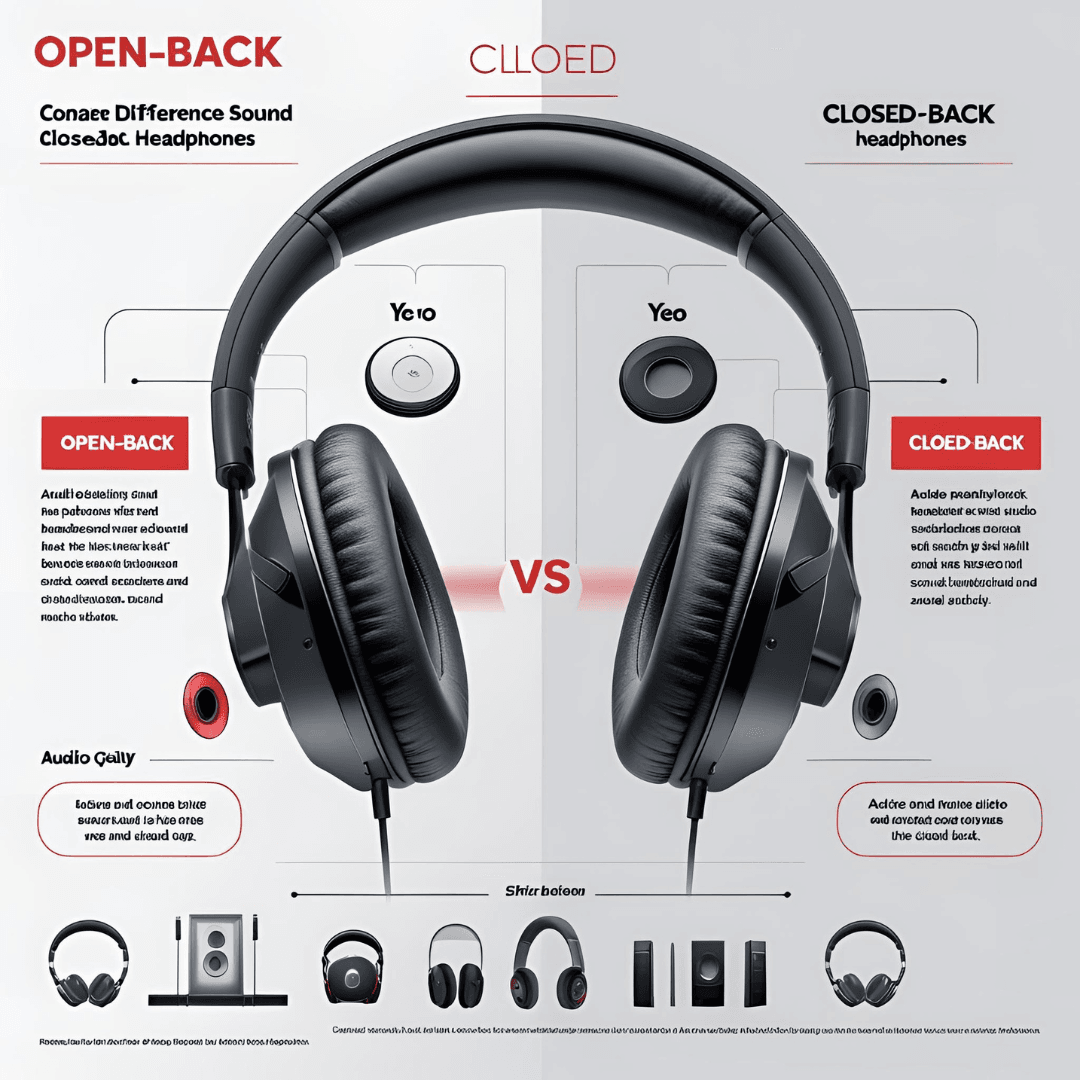
Open-Back and Closed-Back Headphones: Uncover the crucial differences in soundstage, isolation, and ideal use cases. Choose the right design for your audio needs, from studio to gaming.
Open-Back and Closed-Back Headphones
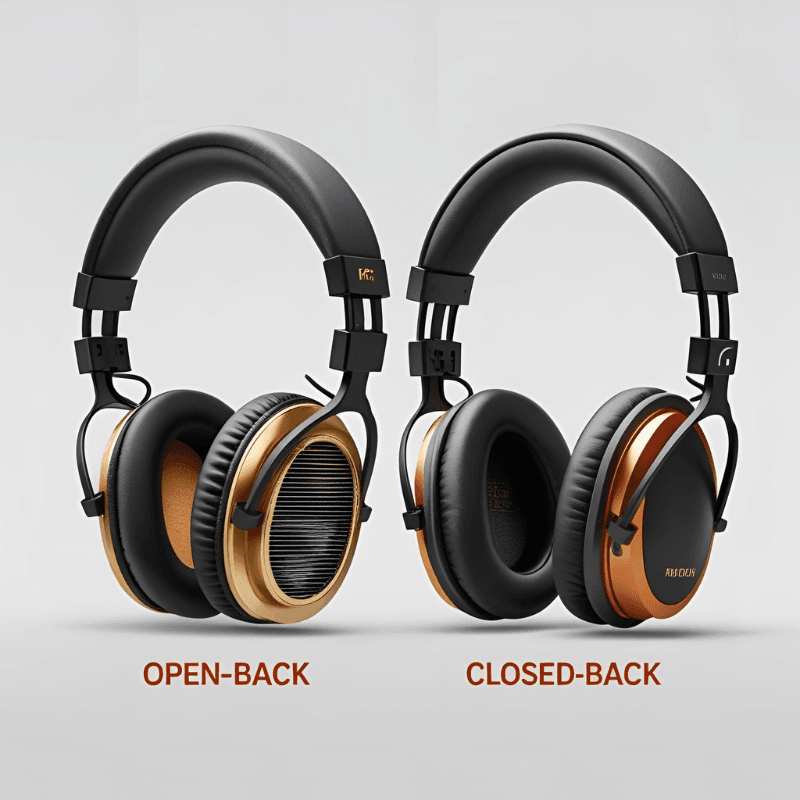
Choosing a new pair of headphones can be overwhelming. Beyond brand names, driver types, and price tags, one of the most fundamental distinctions you’ll encounter is whether they are open-back or closed-back. This design choice isn’t just aesthetic; it profoundly impacts the sound you hear, the environment you can listen in, and even the comfort of the headphones.
For anyone serious about their audio experience, understanding these differences is crucial. It dictates whether your headphones will be your ideal companion for critical listening at home, a loyal partner for your daily commute, or a reliable tool in a studio setting.
In this guide, we’ll break down the core mechanics of each design, explore their unique advantages and disadvantages, and help you determine which type of headphone is best suited for your specific needs and listening environment.
The Core Distinction: How They’re Built
The primary difference lies in the design of the earcups – the outer shell of the headphone that encases the driver.
Closed-Back Headphones
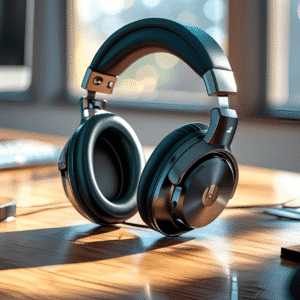
- Construction: As the name suggests, closed-back headphones have earcups that are completely sealed. The outer shell is solid, forming an enclosed chamber around the headphone driver and your ear.
- Purpose: This sealed design is intended to prevent sound from escaping the headphones and to block external noise from entering. For a deeper dive into how different components affect sound, you might find our article on Headphone Drivers Explained insightful.
Open-Back Headphones
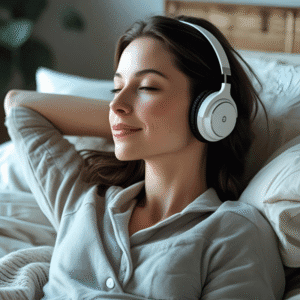
- Construction: Open-back headphones feature earcups with perforations, grilles, or a completely open mesh design on their outer shell. The drivers are essentially exposed to the outside air.
- Purpose: This open design allows air and sound to pass freely through the earcups, interacting with the environment.
The Sound Profile: How Each Design Affects Your Audio
The construction directly influences the sonic characteristics of the headphones.
Closed-Back Sound
- Bass Response: Due to the sealed chamber, closed-back headphones often exhibit a more pronounced and impactful bass response. The trapped air inside the earcup creates a resonant cavity, which can give bass notes more thump and presence.
- Soundstage & Imaging: The soundstage (the perceived spaciousness of the audio) tends to be smaller and more “intimate”. The sound feels like it’s originating more directly from inside your head, as the reflections within the sealed earcup create a less expansive perception of space. Imaging (the precision of instrument placement) can still be good, but within a more confined sonic bubble.
- Detail & Clarity: While good closed-back headphones can be very detailed, the internal reflections within the sealed cup can sometimes lead to minor resonances or a slightly less “airy” presentation compared to open-backs.
Open-Back Sound
- Bass Response: Bass on open-back headphones is typically more natural, nuanced, and extended, but often less impactful or “boomy” than on closed-backs. The lack of an enclosed chamber prevents artificial bass resonance.
- Soundstage & Imaging: This is the hallmark of open-back designs. They create a much wider, more expansive, and “airy” soundstage, often making it feel like the music is coming from outside your head, as if you’re in a room with speakers. Imaging is often superior, allowing for precise placement of instruments in a vast soundscape.
- Detail & Clarity: With fewer internal reflections to interfere with the sound waves, open-back headphones often offer superior clarity, transparency, and micro-detail retrieval. The sound is perceived as more natural and true to life.
Isolation and Leakage: Impact on Your Environment
This is arguably the most practical difference, affecting where and how you can use your headphones.
Closed-Back Headphones
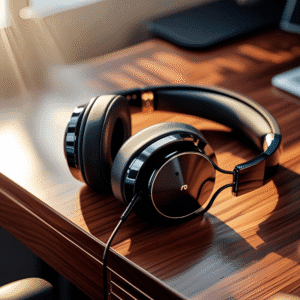
- Noise Isolation: They provide excellent passive noise isolation. The sealed earcups physically block a significant amount of external ambient noise, making them ideal for noisy environments like commutes, offices, or public spaces. If you’re specifically looking for top-tier noise cancellation, check out our guide on the Best Noise-Cancelling Earbuds 2025.
- Sound Leakage: There is minimal to no sound leakage. What you’re listening to stays in your headphones, preventing you from disturbing others around you. This also makes them suitable for recording vocals or instruments, as the headphone sound won’t bleed into the microphone.
Open-Back Headphones
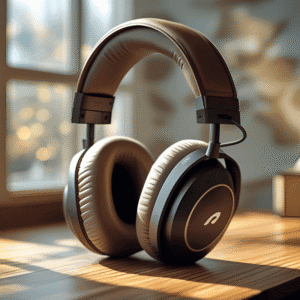
- Noise Isolation: They offer virtually no noise isolation. External sounds can easily enter your ears, and you’ll hear much of your surroundings. This makes them unsuitable for noisy places.
- Sound Leakage: There is significant sound leakage. People around you will easily hear what you’re listening to, almost as if you were playing music through small, quiet speakers. This makes them less ideal for shared spaces like offices, libraries, or public transport.
Comfort and Other Considerations
Beyond sound and isolation, there are other practical aspects.
Closed-Back Headphones
- Heat & Breathability: The sealed design can trap heat and moisture around your ears, leading to them feeling warm or sweaty during long listening sessions.
- Pressure: The clamping force might feel slightly higher as the headphones work to create a seal.
- Size/Weight: Can vary widely, but the sealed design doesn’t inherently make them lighter or heavier.
- Versatility: Highly versatile for various environments.
Open-Back Headphones
- Heat & Breathability: The open design allows for much better airflow around the ears, leading to a cooler and more comfortable experience during extended listening periods.
- Pressure: Often designed with a lighter clamping force, contributing to comfort.
- Size/Weight: Often larger due to the open design, but can sometimes be surprisingly lightweight due to less dense materials in the earcups.
- Versatility: Less versatile due to sound leakage and lack of isolation; best suited for quiet, private listening.
Which is Right for You? Ideal Use Cases
Choosing between open-back and closed-back headphones boils down to your primary use case and preferences.
Choose Closed-Back Headphones If:
- You primarily listen in noisy environments (commuting, office, coffee shop).
- You need maximum noise isolation.
- You want to avoid disturbing others with your music.
- You are a musician, producer, or streamer who needs to monitor audio without microphone bleed.
- You prefer punchy, impactful bass.
Choose Open-Back Headphones If:
- You listen primarily in a quiet, private environment (e.g., at home, in a dedicated listening room).
- You prioritize the widest possible soundstage and a more “speaker-like” listening experience.
- You value natural, transparent, and highly detailed sound.
- You desire superior comfort and breathability for long listening sessions.
- You are an audiophile or critical listener seeking the most accurate and immersive sound reproduction. You might also be interested in our picks for Budget Audiophile Headphones.
Conclusion: Your Environment, Your Sound
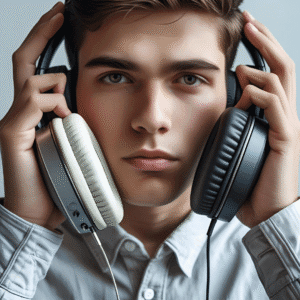
The debate between open-back and closed-back headphones isn’t about one being inherently “better” than the other. It’s about finding the perfect match for your lifestyle and listening priorities.
If noise isolation and privacy are paramount, closed-backs are your go-to. But if you crave an expansive, natural, and highly detailed sound experience in a quiet setting, the airy openness of open-back headphones will reveal new layers in your favorite music.
Understanding this fundamental difference is a key step in building your ideal audio setup. So, consider your environment, think about what you value most in sound, and choose the design that will unlock the best possible listening experience for you.


Pingback: Top 5 Hearing Protection Accessories For Musicians & Concert-Goers (2025 Guide)
Pingback: Affordable Hi-Fi Headphones 2025: Top Picks Under $200 For Audiophile Sound
Pingback: Beyerdynamic DT 770 Pro 2025 Review: Still Worth Buying?